nincada
Attributes
Stats
-
HP
-
Attack
-
Defense
-
Special Attack
-
Special Defense
-
Speed
Summary
Nincada is a Bug/Ground-type Pokémon introduced in Generation III.
Type: Bug/Ground
Abilities:
- Compound Eyes: Increases the Pokémon's accuracy by 30%.
- Run Away (Hidden Ability): Guarantees escape from wild Pokémon battles.
Physical Characteristics:
- Nincada resembles a small, pale insect, closely resembling a cicada nymph.
- It has a white exoskeleton with two small antennae, a pair of beady eyes, and a small mouth.
- Its body is supported by four spindly legs that end in sharp points.
- Nincada's wings are undeveloped, appearing as small protrusions on its back.
Behavior and Habitat:
- Nincada primarily inhabits underground areas, often found burrowed in the earth or under the roots of trees.
- Prefers dark, moist environments like caves or dense forests.
- It spends most of its life underground, using its claws to dig and search for roots to eat.
- Nincada is known for its solitary nature, living a quiet life beneath the surface until it evolves.
In Battle:
- Defensive battler with a focus on evasion and accuracy.
- Notable moves include Dig, Sand Attack, and Fury Swipes.
- Its dual-type makes it resistant to Electric and Poison-type moves but vulnerable to Water, Ice, and Flying-type attacks.
- Often used to set up evolving strategies rather than direct combat.
Evolution:
- Evolves into Ninjask starting at level 20.
- If there is an empty slot in the player's party and a spare Poké Ball, it also leaves behind a Shedinja upon evolution.
Interesting Facts:
- Nincada is unique for its evolution mechanic, resulting in two Pokémon when evolving.
- Its design and behavior are inspired by real-life cicada nymphs, which spend years underground before emerging.
- Nincada’s evolution into Shedinja introduces a Pokémon with the unique Wonder Guard ability, which only allows super-effective hits to deal damage.
- Despite its unassuming appearance, Nincada's evolutionary line is involved in one of the most intriguing evolutionary processes in the Pokémon world.
Pokémon Sprites
Evolution Chain
Moves
Level Up
- Level 1: Scratch
- Level 1: Harden
- Level 5: Absorb
- Level 5: Leech Life
- Level 9: Sand Attack
- Level 14: Fury Swipes
- Level 19: Mind Reader
- Level 25: False Swipe
- Level 29: Bide
- Level 31: Mud Slap
- Level 38: Metal Claw
- Level 45: Dig
TM/HM
Tutor
Other
Flavor Text Entries
- Ruby: NINCADA lives underground for many years in complete darkness. This Pokémon absorbs nutrients from the roots of trees. It stays motionless as it waits for evolution.
- Sapphire: NINCADA lives underground. It uses its sharp claws to carve the roots of trees and absorb moisture and nutrients. This Pokémon can’t withstand bright sunlight so avoids it.
- Emerald: It makes its nest at the roots of a mighty tree. Using its whiskerlike antennae, it probes its surroundings in the pitch-black darkness of soil.
- Firered: Because it lived almost entirely underground, it is nearly blind. It uses its antennae instead.
- Leafgreen: Because it lived almost entirely underground, it is nearly blind. It uses its antennae instead.
- Diamond: It grows underground, sensing its surroundings using antennae instead of its virtually blind eyes.
- Pearl: It grows underground, sensing its surroundings using antennae instead of its virtually blind eyes.
- Platinum: It grows underground, sensing its surroundings using antennae instead of its virtually blind eyes.
- Heartgold: It can sometimes live underground for more than 10 years. It absorbs nutrients from the roots of trees.
- Soulsilver: It can sometimes live underground for more than 10 years. It absorbs nutrients from the roots of trees.
- Black: It grows underground, sensing its surroundings using antennae instead of its virtually blind eyes.
- White: It grows underground, sensing its surroundings using antennae instead of its virtually blind eyes.
- Black-2: It grows underground, sensing its surroundings using antennae instead of its virtually blind eyes.
- White-2: It grows underground, sensing its surroundings using antennae instead of its virtually blind eyes.
- X: Because it lived almost entirely underground, it is nearly blind. It uses its antennae instead.
- Y: It can sometimes live underground for more than 10 years. It absorbs nutrients from the roots of trees.
- Omega-Ruby: Nincada lives underground for many years in complete darkness. This Pokémon absorbs nutrients from the roots of trees. It stays motionless as it waits for evolution.
- Alpha-Sapphire: Nincada lives underground. It uses its sharp claws to carve the roots of trees and absorb moisture and nutrients. This Pokémon can’t withstand bright sunlight so avoids it.
- Sword: Because it lived almost entirely underground, it is nearly blind. It uses its antennae instead.
- Shield: It can sometimes live underground for more than 10 years. It absorbs nutrients from the roots of trees.
Cards
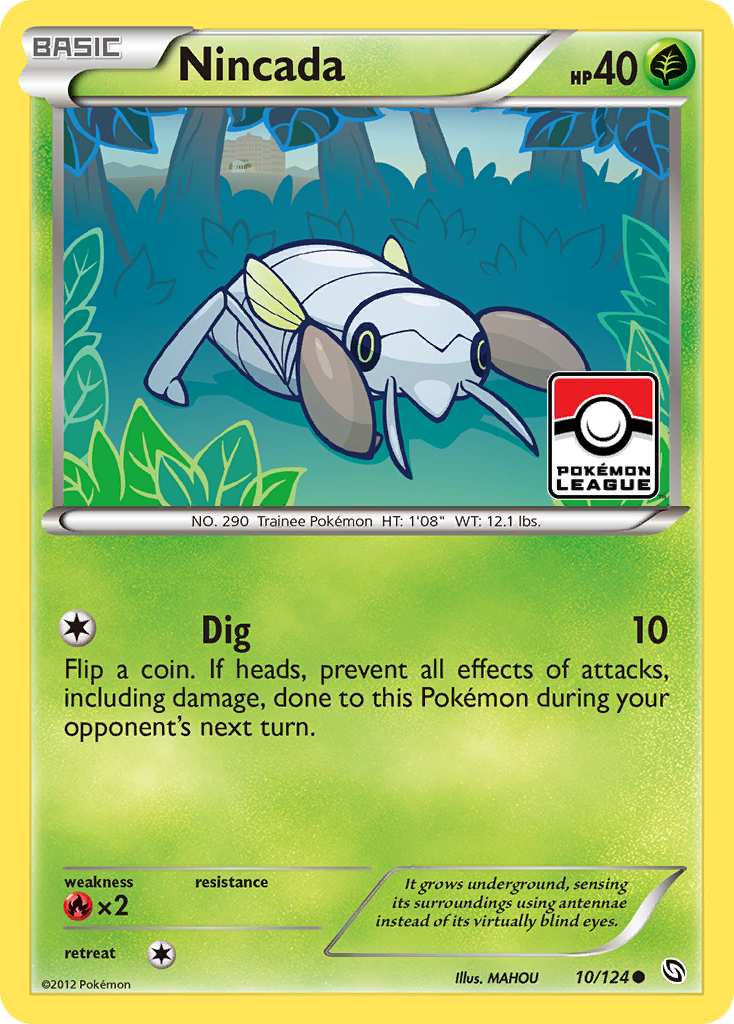
Created by Mahou for the Unknown Set set.
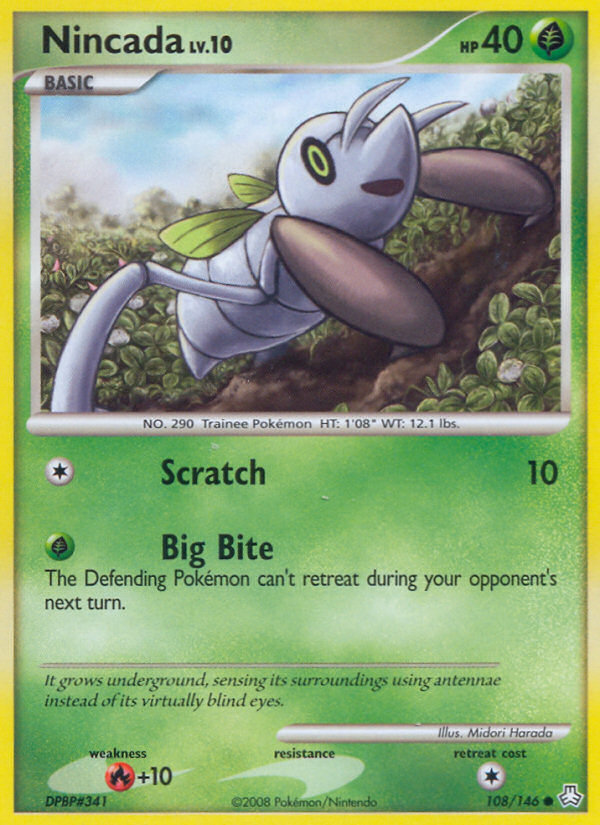
Created by Midori Harada for the Unknown Set set.

Created by Toshinao Aoki for the Unknown Set set.
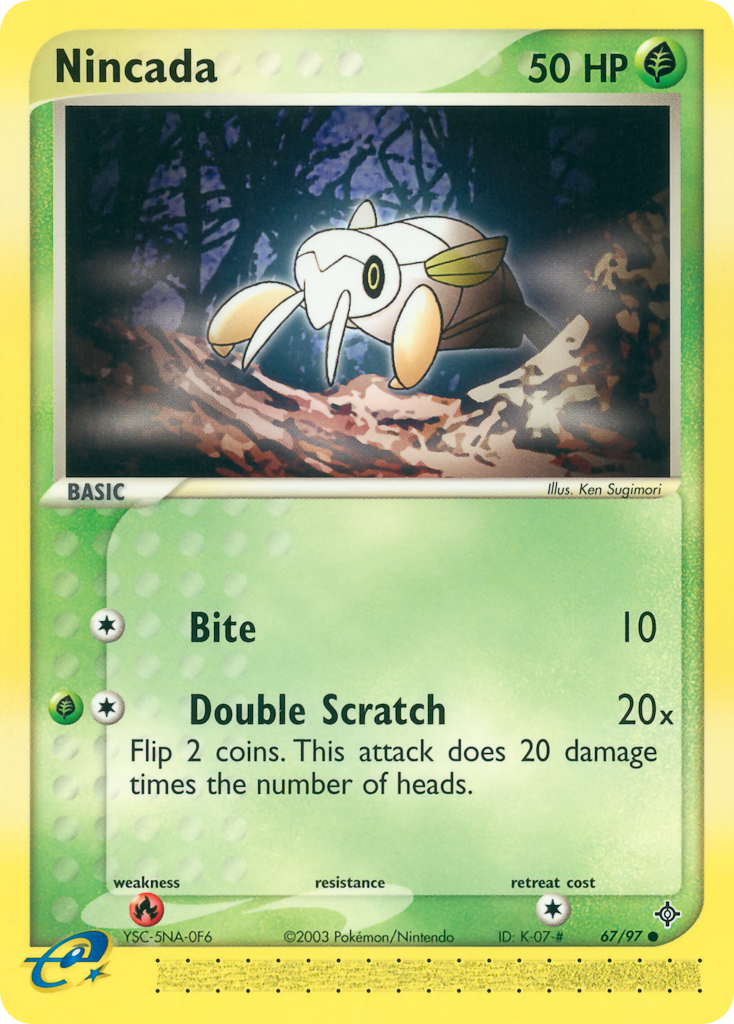
Created by Ken Sugimori for the Unknown Set set.
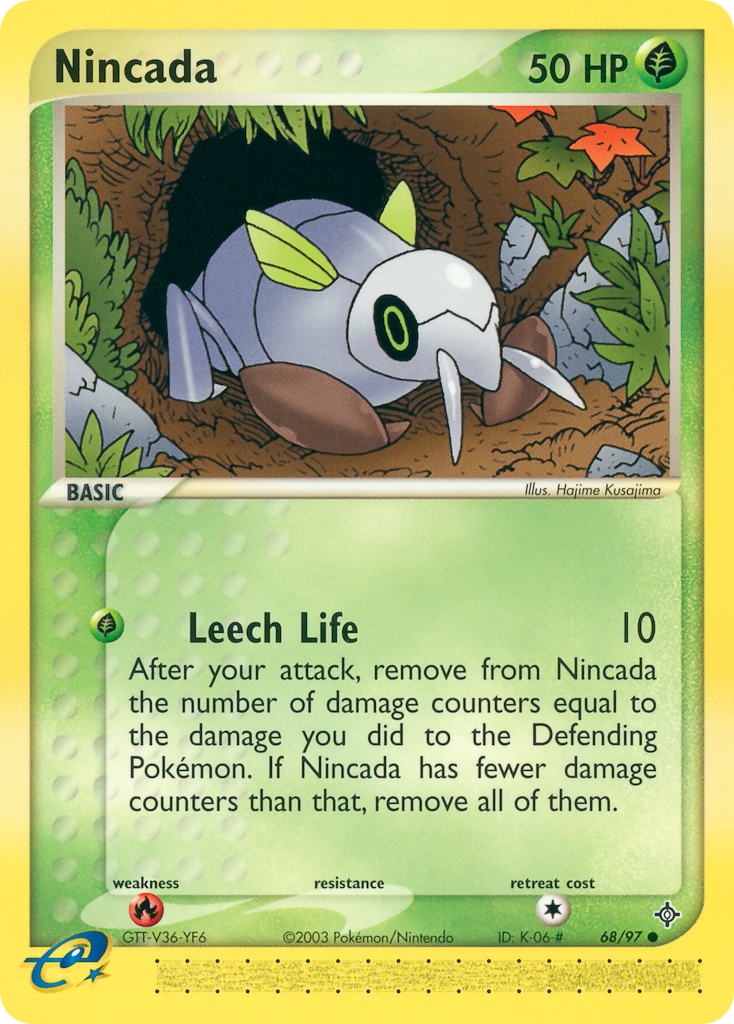
Created by Hajime Kusajima for the Unknown Set set.

Created by Yukiko Baba for the Unknown Set set.

Created by Tomokazu Komiya for the Unknown Set set.

Created by Satoshi Nakai for the Unknown Set set.
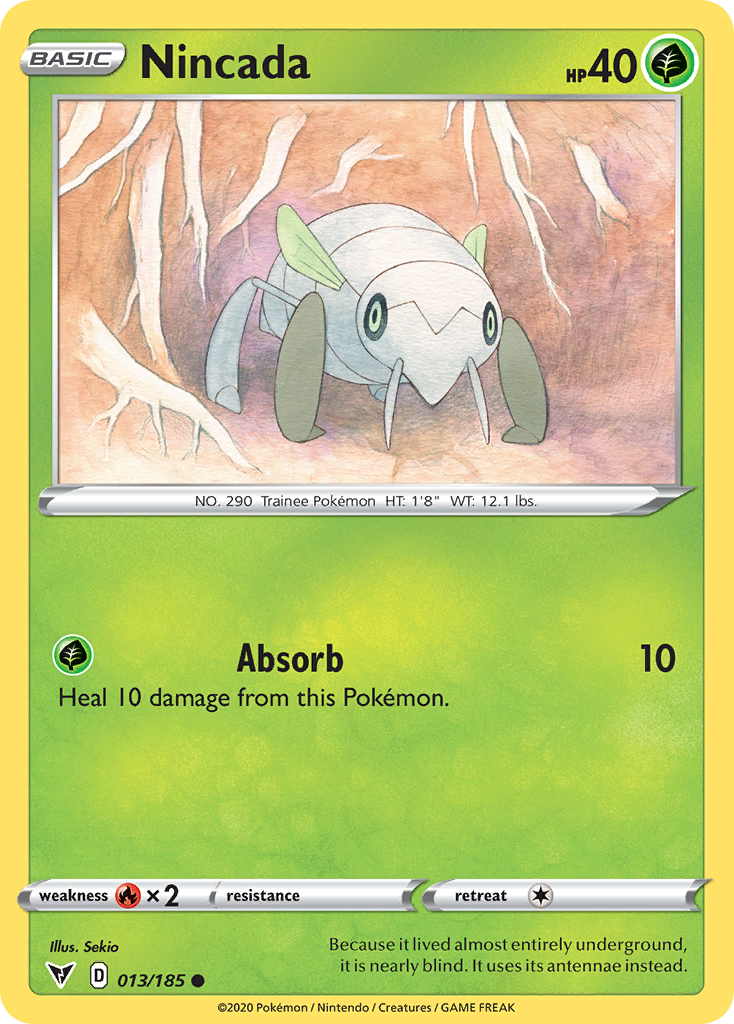
Created by Sekio for the Unknown Set set.
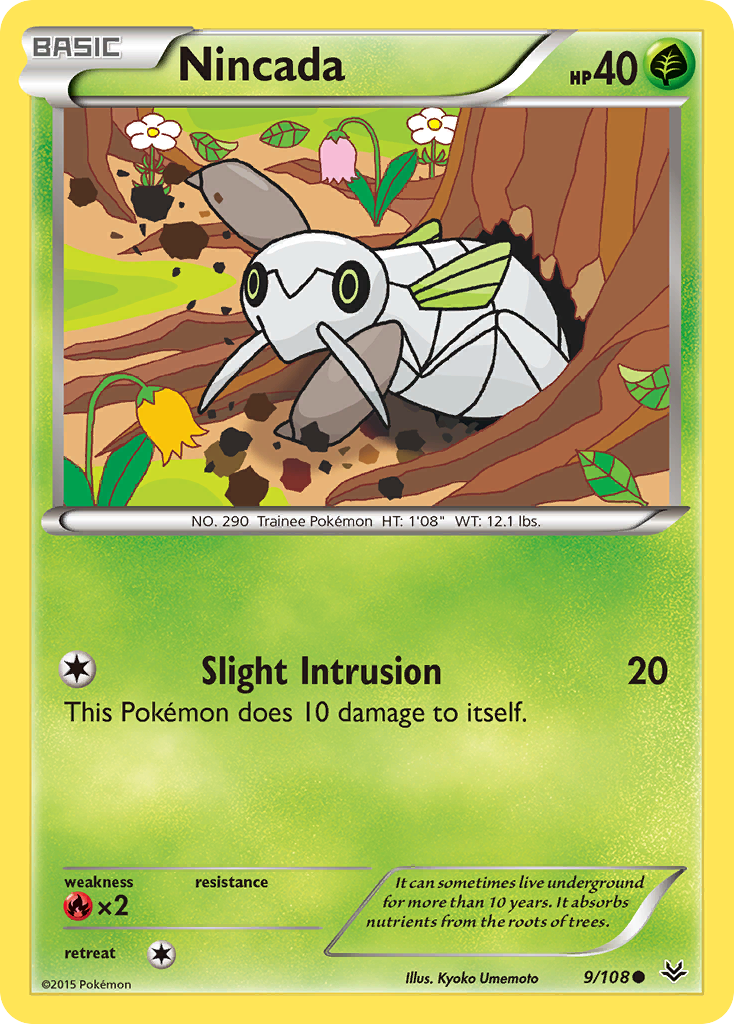
Created by Kyoko Umemoto for the Unknown Set set.